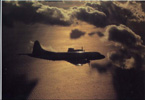juliet7bravo
Posts: 894
Joined: 5/30/2001
Status: offline

|
"I don't see this as a clash of personalities, I see it as a case of debating and justifying our differing opinions. We have different ideas on what's wrong and how to fix them. If I'm understanding J7B's position correctly, he believes there should be additional base force restrictions. I don't favor that. I favor a production queue for these type weapons."
No, I'd just realized this was an entirely futile discussion. I'd thought it was a nice safe subject...but like most things WitP it's just the tip of the iceberg.
"base force restrictions"
- Not so much restrictions so much as airfield size (and port size) should mean something other than "how long the runway is and how many parking places" (to paraphrase). Shouldn't a size 4 AF in the rear with concrete runways and an O club have better AC support facilities than a size 4 hacked out the jungle the month prior? To include things like a torpedo storage/assembly/maintenance facility...the problem with that example though, is that spartan forward bases COULD cycle (including torpedo armed) AC through by providing a location to pull over and "pit stop". How do you emulate this?
- Aviation support should be separated from the "Base Force", and have their own morale, experience, and fatigue levels.
- The size (and quality) of the AF should impact the aircrew and support crews morale, experience, and fatigue levels.
- The size (and quality) of the AF should, along with the "Aviation Support" units morale, experience, and fatigue levels effect AC sortie rates, AC repair rates, AC readiness rates, OP loss rates ect. in addition to just being a yardstick indicating "runway length and preferred parking".
- How about 2 stats for an AF (or port)? One would be the "size", the second could be the "quality" (for want of a better term). You could have a check block to tell your engineers to build the AF in "size" as is currently in the game, another to tell them to "improve" it or not. Say your goal was a size 4 AF. You're starting with a size 1, you build it to a size 4 with "improvements OFF" until it hits size 4 to give you a basic, functional Marston Mat airstrip. Then you could turn "Build AF" to OFF, and toggle "Improve AF" ON if you wanted a fully functional "all the bells and whistles" airfield to improve AC sortie rates, AC repair rates, AC readiness rates, OP loss rates ect.
"a production queue for these type weapons"
Absolutely. Again, torpedoes were a vital, scarce and hard to manufacture resource. To have to manage and distribute them is exactly the type of critical tasks/decisions that the player should be dealing with, or having input on, at his command level. It wouldn't be that hard to come up with historical ballpark manufacturing numbers to use. There was a thread earlier about how to "save" the Asiatic Fleet...hey, screw them, worry about saving the 233 torpedoes at Cavite.
One of the goals of a "WitP 2" should be determining and defining the players role...then determine what types of decisions/input he should have in a "strategic level game" encompassing the entire theater, that will provide him an immersive gaming experience, a high level of detail, and "complexity". Without delving into trivial BS.
"For starters, we could look at the Guadalcanal campaign"
<sigh> I was hoping someone else would point this out, but...since the argument was made that restricting the use of torpedoes would specifically impact the fight at Port Moresby, and render the Japanese players position at Rabaul untenable (in spite of an ahistorically high number of AC present, and present in high numbers far earlier)...then I think we should examine Port Moresby from a "historical" perspective. Historically (as in the game) PM was early ID'ed as a critical location, and there was a "fierce" battle for control of the air. Well over 120 bombing raids of varying degrees of severity. Starting in early 1942 work was started on improving the existing AF and building 5 additional ones. Many troops, an enormous amount of supply, and a very high volume of shipping traffic. So, in order to gain a historical perspective, we can ask the following 2 questions;
(1) How many ships were damaged/sank by airdropped Japanese torpedoes in, around, or in-route to/from PM from January 1942 thru approx. mid-1943?
(2) How many ships were damaged/sank by Japanese bombs in, around, or in-route to/from PM from January 1942 thru approx. mid-1943?
The answer to #1 (damaged/sank by torpedo), is ZERO (0).
The answer to #2 (damaged/sank by bomb), is ONE (1).
Which doesn't indicate that historically the "torpedo" was such a big deal in the "Battle for PM". Yet, somehow, in spite of fewer AC and resources (and NO torpedo use in, around, or in-route to/from PM) the Japanese managed to keep Rabaul from being neutralized or "pounded into rubble" thru 1943. While the Allies were obviously not getting the snot beat out of their supply/troop convoys in, around, or in-route to/from PM...in spite of "getting into range of a japanese airfield".
< Message edited by juliet7bravo -- 4/26/2006 8:51:49 AM >
|
 Printable Version
Printable Version















 New Messages
New Messages No New Messages
No New Messages Hot Topic w/ New Messages
Hot Topic w/ New Messages Hot Topic w/o New Messages
Hot Topic w/o New Messages Locked w/ New Messages
Locked w/ New Messages Locked w/o New Messages
Locked w/o New Messages Post New Thread
Post New Thread